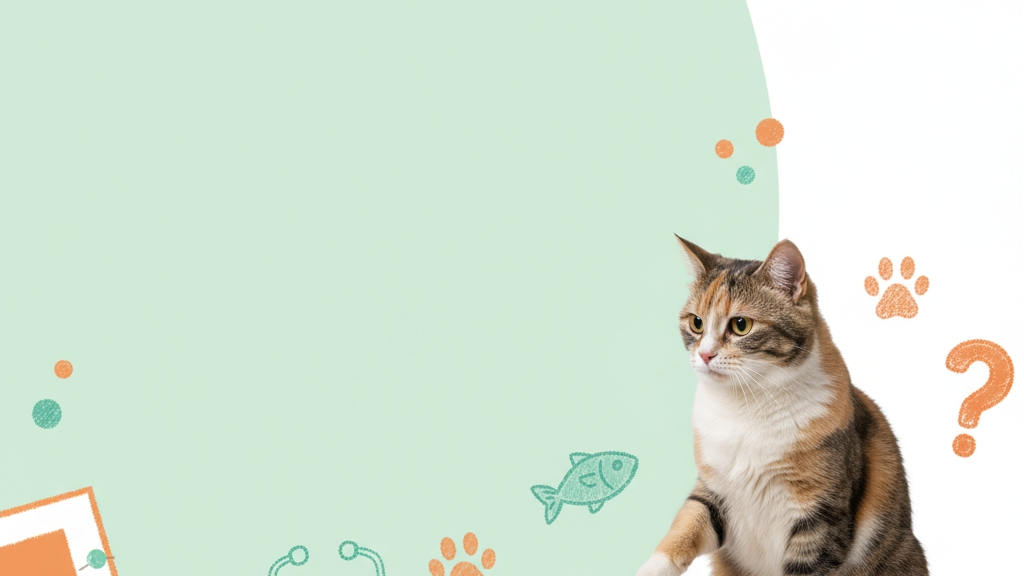If your cat eats a meal and then immediately throws it up, you’re not alone. This is one of the most common concerns cat parents bring up at the vet. While occasional vomiting isn’t always a reason to panic, frequent or sudden changes should never be ignored.
The good news? In many cases, you can reduce or even stop the problem with a few simple changes at home.
Why Do Cats Throw Up After Eating?
There are several reasons your cat might be vomiting right after meals:
- Eating Too Fast
Cats that “scarf and barf” gulp down their food, swallowing too much air, which leads to regurgitation. - Hairballs
Grooming leads to hair ingestion, and sometimes it comes back up with their food. - Food Sensitivities or Allergies
Ingredients like grains, chicken, or dairy can upset your cat’s stomach. - Diet Changes
Switching food brands too quickly can cause tummy trouble. - Medical Issues
Vomiting can also signal more serious conditions like inflammatory bowel disease, parasites, or hyperthyroidism.
If your cat vomits daily, loses weight, or seems lethargic, book a vet visit ASAP.
Solutions That Actually Work
Here’s how you can help your cat keep food down — plus some product picks that make a difference.
1. Slow Down Mealtime
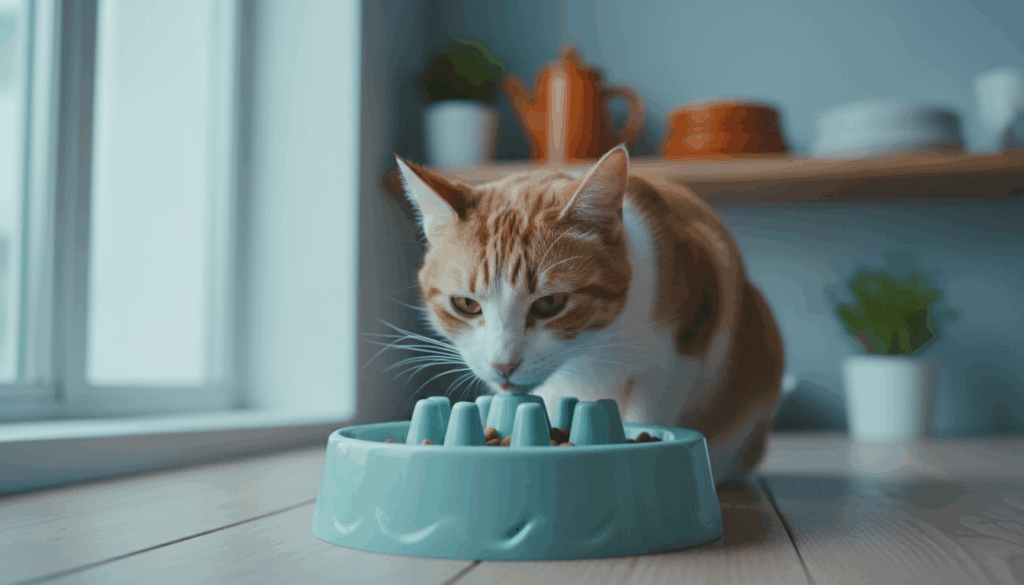
If your cat eats too quickly, using slow feeder bowls or puzzle feeders can make a big difference. These products encourage your cat to work a bit for their food, which slows down eating, improves digestion, and provides extra mental stimulation during mealtime. This simple change can help prevent vomiting, bloating, and other digestive issues that often happen when cats eat too fast.
Recommended Options:
Catit Senses 2.0 Food Tree — A popular slow-feeding solution that encourages natural hunting behavior.
Petbarn Slow Feed Cat Bowl — Ideal for cat owners in Australia, designed with raised patterns to slow down eating.
Where to Buy:
Available on Amazon, Petco, and Petbarn (AU).
.
2. Smaller, More Frequent Meals
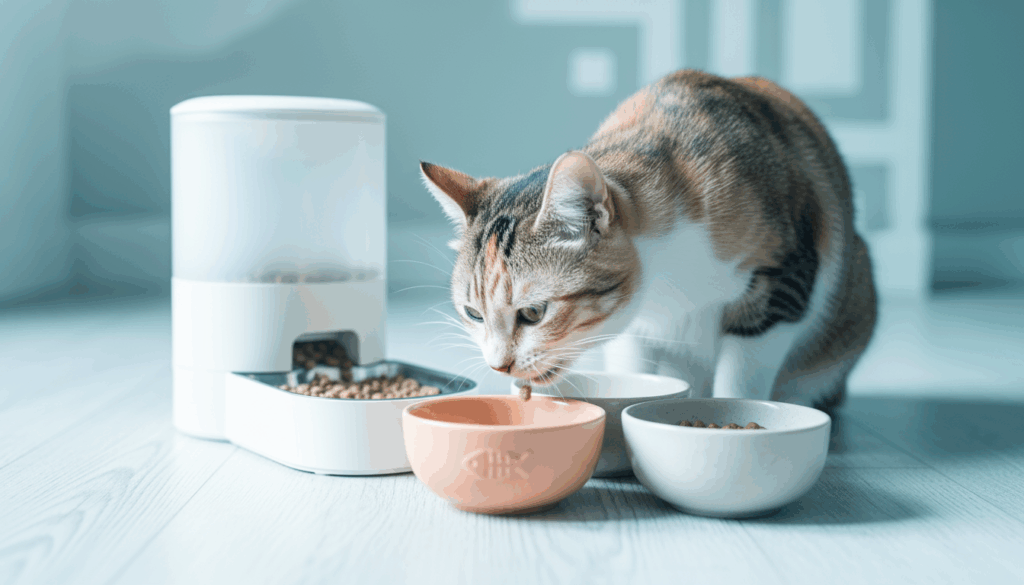
Feeding your cat smaller meals more frequently throughout the day can help reduce vomiting. Large meals encourage gulping and swallowing too much air, which leads to regurgitation. Dividing their daily portion into 3–4 smaller meals helps digestion and keeps their stomach from overfilling. Automatic feeders are especially helpful for maintaining a consistent schedule, even when you’re not home.
Recommended Options:
PETLIBRO Automatic Feeder — Great for portion control and scheduling multiple small meals per day.
SureFeed Microchip Feeder — Perfect for multi-cat households, especially in Australia.
Where to Buy:
Available on Amazon US, Chewy, and Petstock (AU)
.
3. Switch to an Easy-to-Digest Diet
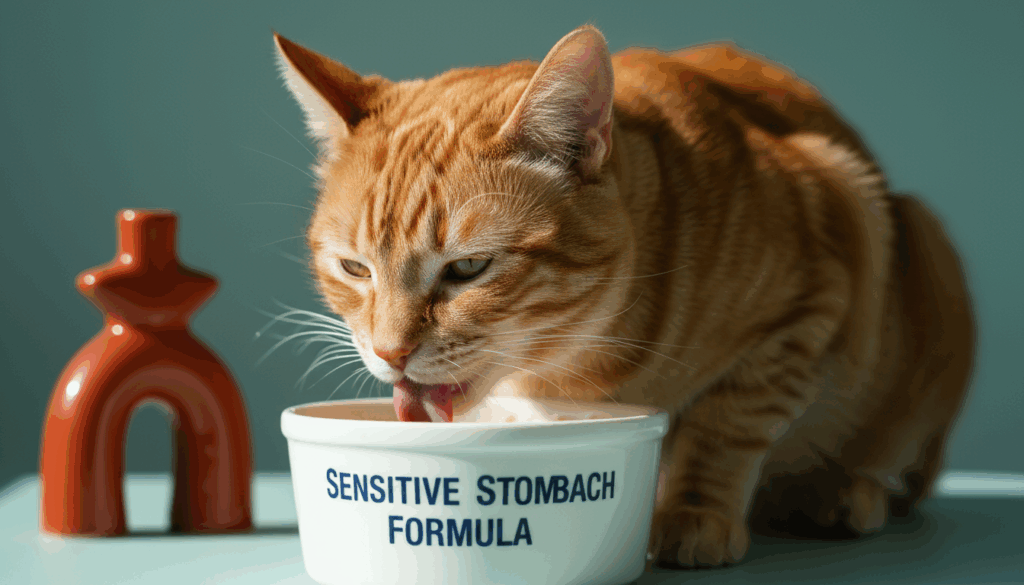
Sometimes frequent vomiting is caused by food sensitivities or ingredients that are hard on your cat’s stomach. Switching to a limited-ingredient or sensitive-stomach formula can make a big difference. When changing diets, transition slowly over 7–10 days to avoid further tummy issues.
Recommended Options:
Hill’s Science Diet Sensitive Stomach & Skin — Specially formulated to support digestive health and reduce vomiting.
Royal Canin Digestive Care — Helps improve stool quality and supports healthy digestion.
Where to Buy:
Available on Chewy, Amazon, Petbarn, and Petstock.
.
4. Help with Hairballs
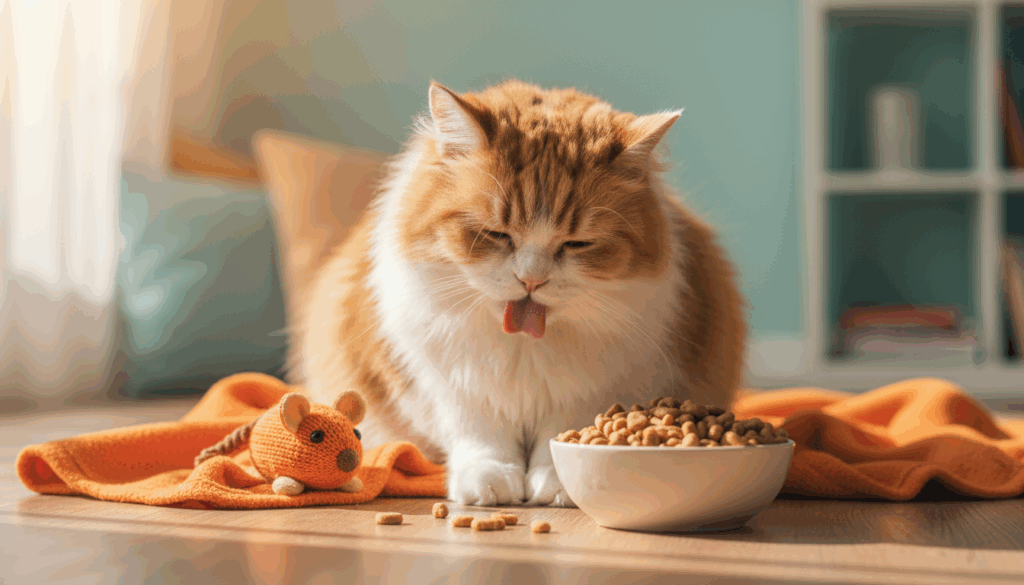
Hairballs are a common cause of vomiting in cats, especially those that groom frequently. Switching to a hairball-control diet or adding supplements can help reduce buildup and make it easier for hair to pass through the digestive tract.
Recommended Options:
Greenies Hairball Control Treats — A tasty way to help reduce hairball formation.
Royal Canin Hairball Care Dry Cat Food — Designed to support healthy digestion and minimize hairball-related vomiting.
Where to Buy:
Available on Amazon US, Chewy, and Petstock (AU)
.
5. Keep Stress Low
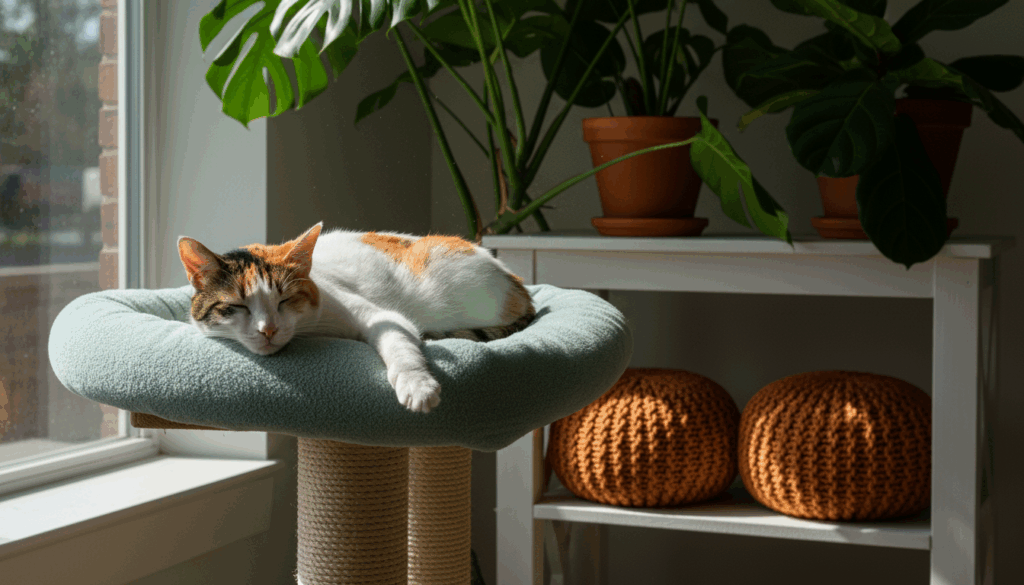
Stress can sometimes trigger vomiting in cats without any obvious physical problem. Creating a calm and stable environment can make a big difference. Make sure your cat has cozy hiding spots, vertical climbing spaces, and regular playtime to help them feel secure. Reducing stress often leads to healthier eating habits and fewer digestive issues over time.
Recommended Options:
Cat Tree or Climbing Tower — Gives your cat vertical space to explore and relax, which can reduce anxiety.
Interactive Toys & Puzzle Games — Help release excess energy and keep your cat mentally stimulated, lowering stress levels.
Cozy Cat Bed or Hideaway — Provides a safe, comfortable spot where your cat can retreat and feel secure.
Where to Buy:
Available on Amazon US, Chewy, and Petstock (AU)
.
Final Thoughts
Most of the time, vomiting after meals comes down to eating too quickly, food sensitivities, or hairballs — all manageable with the right tools and diet.
Start by slowing down mealtime, offering smaller portions, and trying a sensitive-stomach formula. With a little trial and error, you can usually help your cat enjoy their food without the mess afterward.

